With the World Cup starting tomorrow, it seemed rather appropriate that one industry insider this week spoke of the “hospital pass” Dalton Philips received at Morrisons from his predecessor
After Sainsbury’s released its final financial update under Justin King’s leadership this morning, the pertinent question is how well King has teed up his long-time teammate in the Sainsbury’s engine room Mike Coupe.
By recent standards Sainsbury’s 1.1% fall in first quarter sales (excluding petrol) is far from a disaster.
The marginal fall in like-for-like sales is its second consecutive quarterly fall after nine years of growth, but compares favourably to the 3.1% like-for-like drop Sainsbury’s recorded in the fourth quarter, the 3.8% first quarter fall in sales Tesco experienced or Morrisons’ 7.1% first-quarter sales slump.
Sainsbury’s shares rose 4.5p (1.4%) to 334.3p on the news and King certainly appears confident he is handing on the business in good shape.
“I’m leaving at a time that, while the headline number is negative, our competitive position remains very strong,” he told journalists this morning.
Sainsbury’s drop in like-for-likes was negated by sales contribution from new space (including 27 new convenience stores), translating to an overall rise in group sales of 1% excluding fuel.
King added: “You deliver your performance in the context of the market, which has been growing at its lowest level in ten years. Our relative performance against our main grocery competitors has been, if anything, a little stronger in the last quarter than it has been for a while.”
Coupe also didn’t sound like a man unduly worried or preparing a “kitchen sinking” exercise when he assumes the reins after next month’s AGM. “The business is in great shape,” he said. “We’ve been very successful at competing in what has been a challenging market by making sure we’re competitive on price and emphasising points of differentiation. Our challenge going forward is to make sure we continue to be able to do that and add value where customers want value.”

Nonetheless, the signs are there that Sainsbury’s is feeling at least a measure of the pain bedevilling its listed contemporaries.
HSBC analysts talked of “worrying underlying trends” this morning, noting that the 1% sales lift translates to an additional £240m of sales on an annualised basis, which looks less impressive when weighed against the supermarket’s £1bn of capex last year.
The 1.1% like-for-like sales drop was also softened by double-digit growth in convenience and online (18% for convenience; 10% for online), indicating that the like-for-like sales fall in its existing superstores was down over 3.5% - a figure that brings Sainsbury’s core performance back towards Tesco and Morrisons.
Online growth can only be part of the answer to this problem, especially given the growth of online appears to be slowing somewhat. Sainsbury’s 10% online growth over the quarter has fallen from previously reported year-on-year growth in the high teens, though chief financial officer John Rogers said the performance was “bang in line” with the growth of the overall online grocery market which has itself slowed to just over 10%.
Where Sainsbury’s retains something of a competitive advantage is in the way it has been able to more clearly define its proposition to customers, while competitors have tended towards narratives based purely on price.
Sainsbury’s has a consumer appeal heavily based on service and experience, evidenced by winning the Grocer 33 Customer Service and Availability Awards for the second year in a row at The Grocer Gold Awards last night.
Grocer 33 data shows Sainsbury’s extended its lead last year (averaged on a week-to-week basis) on combined shop floor service and store standards scores and recording an average score almost double that of its nearest competitor on availability.
This continued differentiation is one of the reasons Sainsbury’s is holding firm on its full-year forecast of a 0.2% rise in like-for-like sales (Rogers added, by way of explanation, that the quarterly year-on-year comparatives will become less tough in Q3 and Q4).
But such is the uncertainty in the grocery sector that analyst estimates of full-year pre-tax profits currently vary wildly from £589m to £871m (ranging from a 35% drop to a fall of just 3%). Sainsbury’s still felt unable to offer its own guidance today.
Mike Coupe did allow himself to make one forecast: “If the sun shines for the next four weeks and England win the World Cup, we’ll probably be reporting a very bouncy next quarter,” he mused.
It is to be hoped he has at least one alternative plan.







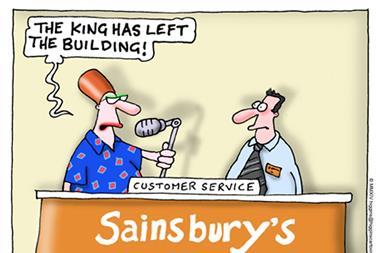
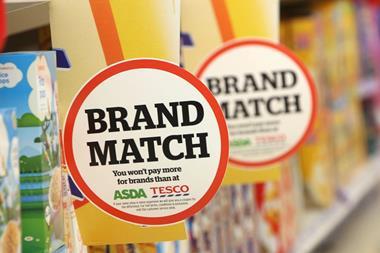
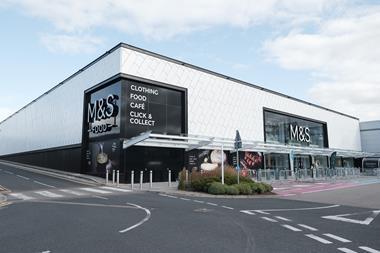

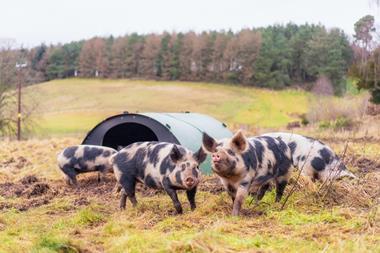
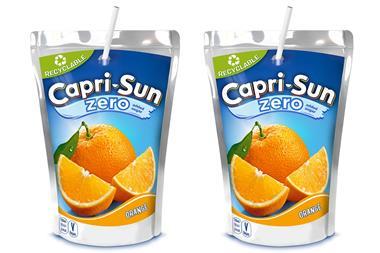






No comments yet